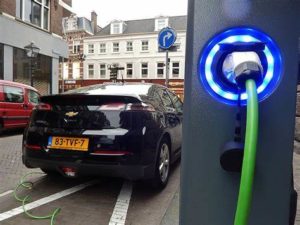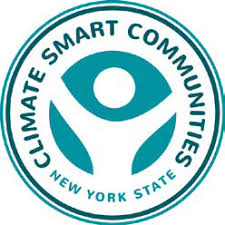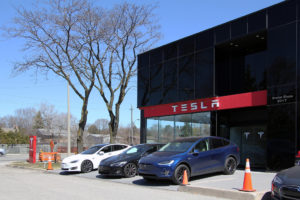Description
Municipalities can encourage the adoption of electric vehicles (EVs) by promoting the availability, benefits, and charging station options for residents and businesses through a variety of channels from online resources to in-person events. These actions are low-cost with a direct impact on the level of interest, awareness, confidence, and ultimately adoption of electric vehicles.
EVs provide benefits both to their owners and all residents. Residents who buy EVs will save money over the lifetime of the ownership of an EV and the purchase prices are rapidly becoming equivalent to their ICE equivalents. Reduction of GHG emissions from local mobile sources by converting gas-powered vehicles to all electric are significant and immediately impact local air quality.

1
2
Implementation Phases
Initial web-only resource. Train municipal staff on EV outreach best practices and provide dedicated web resources on the City/Town website with EV information for both existing and prospective owners.
Organize and host in-person EV events. Coordinate with local events (farmer’s markets, festivals, public parks, corporate campuses, etc.) to provide information on EV benefits and offer test vehicles for interaction and ride-and-drive activities. Dealers, rental car companies, and EV sponsors can take an active role in event planning and activities.
Challenges
Municipal staff may not be familiar with EV options and programs and may require initial training and guidance.
Local/regional inventory may not be available for rapid adoption, so dealerships need to be engaged.
Example Municipalities
Several municipalities have already implemented this action…
- Mayors across the country are encouraging their residents to switch to EV’s, such as Los Angeles’ Eric Garcetti and Baltimore’s Stephanie Rawling-Blake who both declared ‘drive electric’ proclamations
- In Cincinnati, Ohio EV drivers are given free parking at any metered parking within the city
- GreenStep Cities is a public-private partnership which aids Minnesota and midwestern cities in preparing for an EV centric city and will assist any municipality in the region
Greenhouse Gas (GHG) Reductions
Data
Total CO2e is reduced per year by switching from gas to electric cars by all the newly constructed houses with electric vehicle charging capability (EL4).
Methodology
Total CO2e is reduced per year by switching from gas to electric cars by all the existing multifamily houses with access to public electric vehicle charging (EL5).
This strategy is simple addition of EL4 and EL5 CO2 emission reductions.
Results
18,060 metric tons of CO2e is reduced per year by encouraging the use of electric vehicles.

Climate Smart Communities (CSC) & Clean Energy Communities (CEC) Link
This action is also related to CEC and CSC actions for which municipalities can earn points toward certification. Municipalities that develop and implement a formal public campaign can:
CEC Actions:
- Earn 200 CEC points through CEC’s high impact action, Community Campaign for Electric Vehicles.
CSC Actions:
- Earn 3 points through CSC’s PE8 Action: Community Campaign for Electric Vehicles.

Co-benefits
There are multiple co-benefits to completing this action, including:
- Economic savings over vehicles’ useful life.
- Quieter streets.
- Improves air quality.
- Accelerated transition to electric vehicles
Resources
https://www.zappyride.com/
https://www.coned.com/en/our-energy-future/technology-innovation/electric-vehicles
https://www.getyourgreenbacktompkins.org/ev-tompkins
https://ev.austinenergy.com/
https://austinenergy.com/ae/green-power/plug-in-austin



